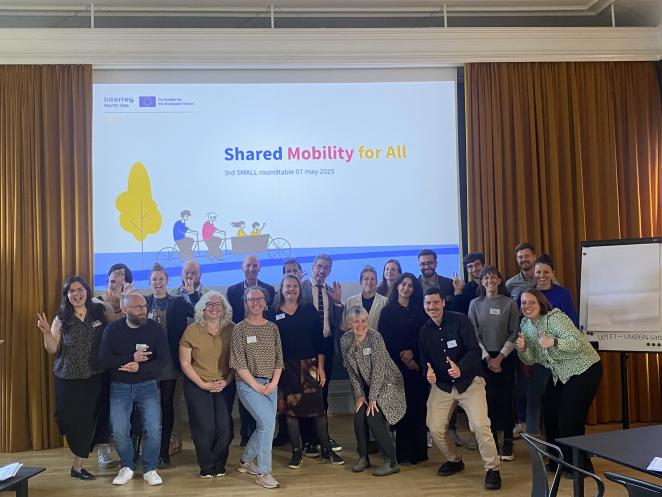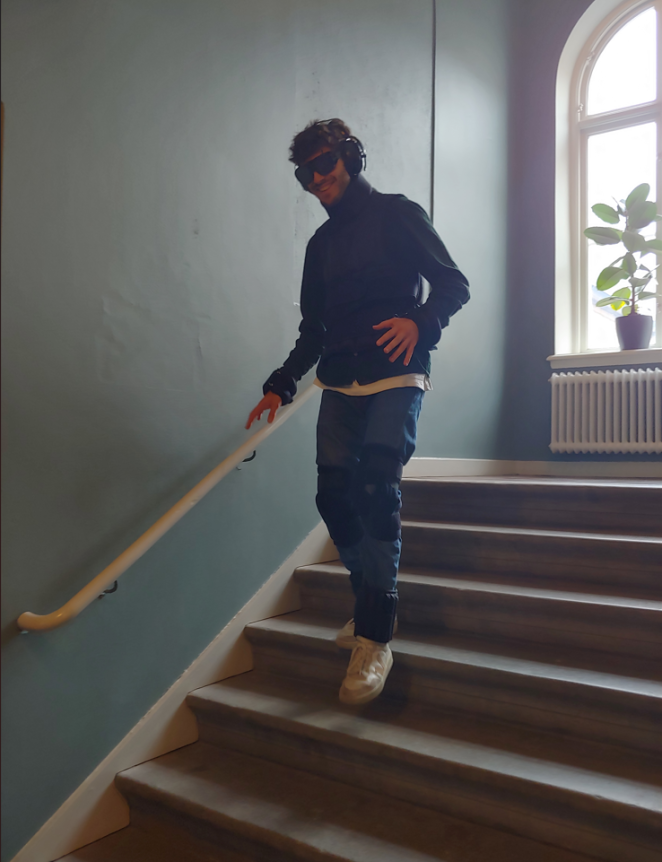
On 7 May 2025, the SMALL project hosted its third expert roundtable in Varberg, Sweden, bringing together city representatives, planners, researchers, and mobility providers to explore how inclusive shared mobility can be embedded into long-term strategic planning.
The event represented a significant milestone for SMALL, as the project moves from pilot testing toward long-term implementation. Held at the heart of Varberg, the all-day session offered participants a chance to dive into real-world planning challenges, exchange lessons learnt, and reflect on how cities can ensure that future mobility systems work for everyone, especially people with reduced mobility.
Deep-dive into the SMALL Topic Guide
The day began with a deep dive into the SMALL Topic Guide, an adapted version of the SUMP (Sustainable Urban Mobility Planning) framework developed by Rupprecht Consult. The guide aims to support planners in making shared mobility not only more sustainable, but also more inclusive, especially for people who are often left out of mainstream transport planning, such as elderly citizens, children, and people with disabilities.
During an interactive session, participants discussed how the guide’s concepts could be applied in practice. Questions were raised about how cities define "inclusion" and "shared mobility", how to integrate different voices in planning processes, and how to ensure that new systems meet the needs of people with both permanent and temporary mobility challenges.
Good practices from Madrid and León
In the afternoon, participants heard from two Spanish cities that have made inclusivity a core part of their mobility strategies. Pedro Fernández from the Municipality of Madrid presented the city’s experience under the “Madrid 360” strategy, including accessibility-focused digital platforms, training sessions for seniors, and the use of participatory platforms to reach vulnerable groups. Meanwhile, Dr. Cristina Villalón Robles from the City of León shared how the smaller city is achieving impact through thoughtful planning and low-cost interventions: from pedestrian-friendly “metro-minute” maps to new bus stop designs and noise-activated traffic signals for the visually impaired.
Both cities highlighted the importance of clear indicators, strong political support, and regular communication with stakeholders, showing that inclusion is not only achievable, but also practical.
Not enforcing but nudging
The final session took a behavioural turn, as Katharina Paoli from NUDGD led a workshop on nudging. Participants learned how to identify common biases like status quo bias and loss aversion, and how to apply tools such as framing, social norms, and timing to create more receptive environments for inclusive policies. The goal: to make inclusive shared mobility not only the right choice, but also the easy and obvious one.
The roundtable closed with a collective reflection on the importance of long-term thinking. Many participants noted that inclusive mobility planning is ultimately about future generations and that strategic frameworks like SUMP need to be adapted to reflect this. The insights from Varberg will feed into SMALL’s upcoming Insight Paper, offering concrete steps cities can take to align their plans with the principles of shared mobility for all.

8-9 May: SMALL 5th partner meeting
Day 1
Cycling, updates and performances
The first day started off with a bike tour around Varberg, enjoying the spring weather and ending in a well-deserved lunch before diving right into the first session of the partner meeting.
The discussion focused on the latest pilot updates, with partners reenacting re-runs of the performance that won SMALL the Interreg SLAM award.
After a typical Swedish coffee break, the day continued with a follow-up on the SMALL topic guide.

Day 2
Co-creation and packing a “SMALL suitcase”
Day two was once again the perfect occasion for insightful discussions. Starting with the co-creation session with VU Amsterdam and the impact evaluation in the morning.
For those who ever wondered how it feels to move around a city like a child, an elderly person, or someone with visual impairments, the afternoon session was the setting for an interesting simulation.
The Shared Mobility for All partners developed three items to pack in a “SMALL Suitcase” that could be then used in any city, so that professionals can get an idea of what these minorities experience in daily life.
The three items are the following:
Geri Suit: a suit that makes the wearer heavier, straining their joints and preventing them from functioning properly
Periscope: thanks to its set of mirrors, the periscope allows the user to understand how a 1 m tall child sees the world from their lower point of view
Simulation glasses: thanks to these unusual lenses, the wearer can experience various kinds of both near- distance and long-distance visual impairments.
Even if such simulations can allow for only a fraction of what disabled people or members of other minorities routinely experience, they remain an important tool to build empathy and connection.
Are you ready to pack your suitcase? Stay tuned and continue following and supporting Shared Mobility for All!
